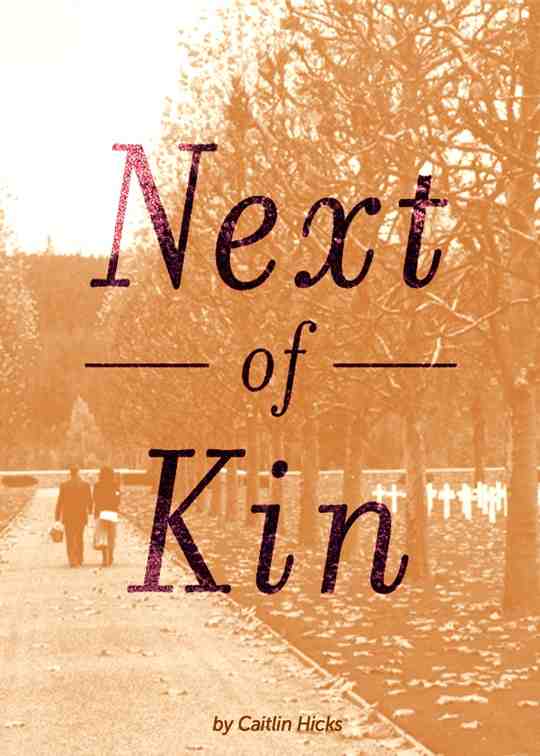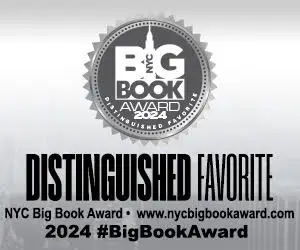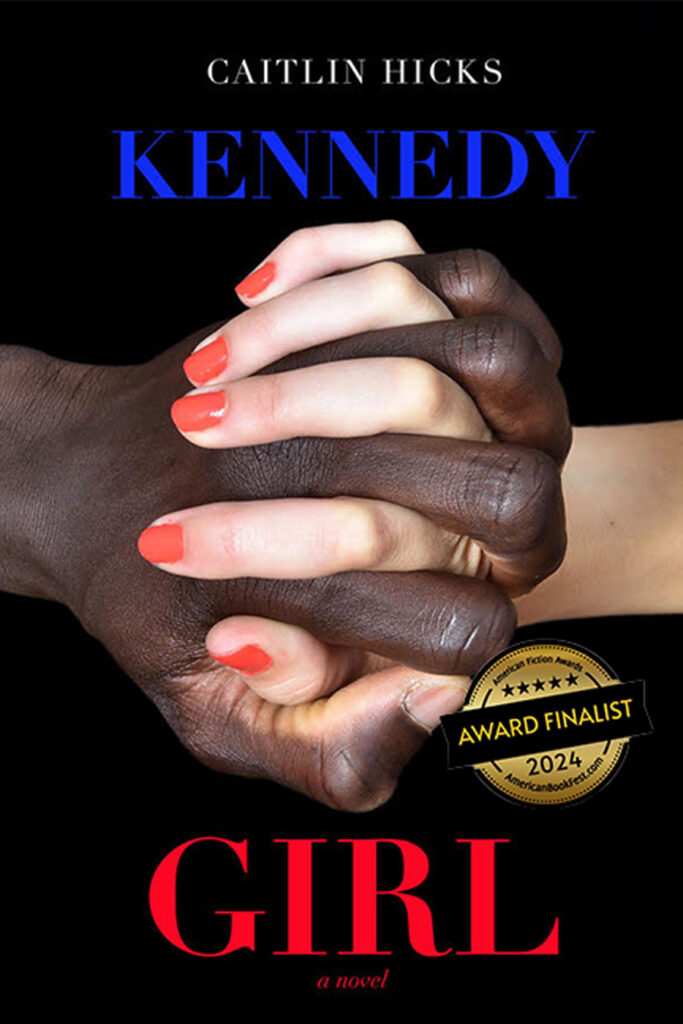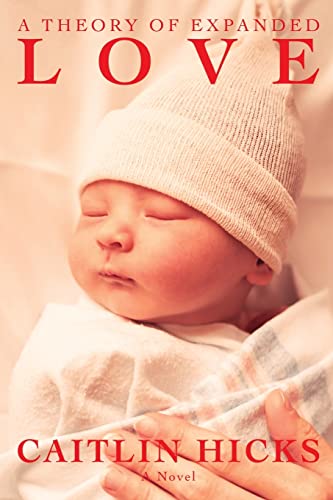NEXT OF KIN was published in the Milwaukee Journal Sentinel as ‘A Visit for Remembrance’ in 2003 and on Smashwords to 5 star reviews. It inspired an aspect of my novel A THEORY OF EXPANDED LOVE, published in 2015 by Light Messages Publishing, North Carolina.
In 2018, I produced a show called NEXT OF KIN: Descendants of War, and this story was its centre piece.
“
This is a story that began and ended before I existed. All the words were spoken, the songs sung, promises made, kisses, letters, flowers and telegrams — all just a memory before my parents even met. Yet, after they loved and married and I materialised, six births later, the story carried on in my mother’s heart. Even now, long after my mother’s heart has stopped beating, the story carries on in mine.
When I was fifteen, my sister Mary showed me a newspaper clipping she found in Mother’s cedar chest in the tool shed. On a smoggy summer Pasadena day, Mary had lured me into the cobwebbed darkness, with the promise of a really good secret. We scurried past Mother on the back porch, standing in the midst of huge piles of dirty laundry, pouring soap into the washing machine. The clipping announced the death of a man named Carl Robert Swanson, killed in World War II. He was survived by his wife, Marcelle Prudell, our mother.
I sat in the corner of the shed, scratching a sharp rock into the cement. We whispered and giggled to dispel the excitement of the absolutely unexpected. Mother was married ? She loved someone other than Daddy?
In the summer of my twentieth year, my Mother’s secret took on a new dimension.
I am standing in the kitchen next to a sink full of plates immersed in suds, facing my mother. The usual chaos reigns around us, toast crumbs, coffee cups half empty, cupboards open, leftover spaghetti in a metal bowl. Strauss’ Blue Danube coming out of the stereo, a child’s hands banging low notes on the piano. The dog barks and Mother asks me, “Can you do me a favor? While you’re in Europe?” and suddenly I feel important. “I’d really appreciate it,” she says, putting her hands in her apron pockets. My mother moves closer to me, speaks to me in undertones, and in the midst of this, we’re somehow alone. “Will you get me a photograph of Carl Robert ’s grave?” I’ve never spoken his name to her, but Mother doesn’t squander these secret seconds on explanations. She knows we know! She speaks of a French cemetery, near the border of Alsace Lorraine. “Just bring me back a photograph,” she says. I want to hug her, to say I’m up to the task, but I only nod, and she turns and puts her hands back in the sink.
September 28th. San Francisco/Vancouver/ Amsterdam. In Vancouver, I board a DC-8, and now we’re flying across Canada. The oranges and blues of the Aurora Borealis shimmer on the horizon.
It’s 8 AM, midnight Los Angeles time, when the plane touches down. I try not to give into the small, sinking feeling gathering in a ball at the pit of my stomach.
Canals sparkle in the morning light, framed by gingerbread buildings sewn together in whimsical shapes along narrow, cobbled streets. Two tram rides and five hours from touchdown, I arrive at the Van Onna Hotel, next door to a Dutch Reform Church. An empty moment filled with longing, an open door, a choir lifting voices to God: I listen, leaning in the cool doorway, soaking up the smell of incense, the flicker of lit candles. I trudge up steep, winding stairs with my bags to the top floor of the hotel. Rain pours relentlessly on a skylight above my bed; I glance around the small room, count back the hours.
Six months! I breathe in and out, as the months stretch ahead of me like a jail sentence. I realize I have never slept in a room of my own or been without the company of others as long as I have lived. How could I have known I would feel this way? I try to imagine the happy chaos going on so many miles away. They’ll all be eating breakfast soon, Daddy presiding in his captain’s chair, Mother up and down after every request, bright lights, clamouring voices, the room full of familiar sounds and smells and the people I love. I ache to go back, but I’ve already spent some of the grant money on a plane trip. I pull off my boots, walk in damp socks to the sink. The taste of toothpaste comforts me.
December. Icy fingers upstairs at 10, Chemin de la Cheminette, Chambesy, outside Geneva. In the distance, jagged French mountains stretch thick and white with snow. I’m going to stay in this little white house, for three months as an Au Pair to a diplomat from the Ivory Coast and his two five year old charges. I’m going to write my paper on the European Economic Community, and then I’m going straight back, just like the plan. With this little bit of income, I’ll have enough to treat myself to Toblerone chocolate bars. I’ll have a room where I can close the door, my own “shower” and I won’t have to keep an eye on my back pack. Here I’ll make friends in Monsieur’s kitchen with Paul Bouda, from Upper Volta; I’ll try to teach him to read. I’ll tell secrets to plump, cheerful Fiona, my fellow Au Pair across the lane.
Christmas morning, I can see my breath in my icy, bare room as I hold a blue letter, written in my mother’s hand. “I had to look up the records in my box out in the back for the info about Carl’s resting place. U.S. Military Cemetery Epinal, France, plot 2-N, row 6, grave 5682. Put a few flowers on it for me would you? Thanks a lot. It’s hard to believe so much time has gone by. His serial # is 36266015 PFC – Shall write again. I say a prayer for you everyday in Mass – lotsa love, Mother.”
* * *
February is finally here, and I stand in our kitchen, drinking in the sight of my mother for the first time in six months, at the sink beside the dishwasher, hands in her apron pockets. Like she never left, like she’s still washing those dishes. Even as I arrived at dusk in dark and noisy train stations smelling of cigarettes and diesel fuel, as I woke in bunk beds surrounded by strangers in youth hostels, bathed in drafty, group showers, carried everything I owned with me to the toilet, Mother was right here, hands immersed in suds, singing to herself some opera tune which climbed to the top of her range. A simple gratitude floods my body just seeing her familiar face, her thick arms, her orange and yellow flowered apron, muddy with stains, her scuffed Hush Puppy loafers. I’m waiting to hear her “Welcome home!” I’m trying to think of how to say, I put it off to the end. She looks tired, but there is excitement, anticipation in her eyes.
“Did you get the photo?” she says right away. “Did you get the photo of Carl Robert’s grave?” I am stunned by her desperation, and guilty. I have nothing for her. Her face is falling. The room swirls around us both.
“I didn’t have any money left to travel on the trains.” My hair is ragged around my shoulders, I’ve lost 20 pounds, but Mother hasn’t seen me. “My friend wouldn’t take the detour . . . I, I . . It wasn’t safe to hitchhike alone.” Her disappointment suspends sickly in the air between us. “Don’t worry, Mom, I’ll be back to Europe soon.” I can barely spit the words out of my mouth, so desolate do I feel at the thought of ever going on a trip again. With the sights and smells of home surrounding me like old friends, I can only see the impossibility of it all. When will anyone ever have the money, or the time, or the interest to get that photograph? And then as the young do, I pushed aside the regret and got on with my own life.
Years later, after my mother died, as my godmother Aunt Peggy Lou Prudell settled her affairs, she sent me an old faded, yellowed Western Union telegram sent to her husband, my uncle:
1945 MAR 2 PM .
Milwaukee, Wis
Charles A. Prudell
Statler Hotel, WASH DC
CARL KILLED CONSOLE AND CHEER MARCELLE
LOVE, PEGGY LOU
And once again, this man who loved my mother, Carl Robert Swanson, came back to life in my imagination. I remembered his 8 x 10 army head shot tucked away in Mother’s cedar chest: smooth creamy skin, the thin face of a boy, really. As my mother lay dying of cancer, she couldn’t help speaking about him. As her hair fell out, a few details did too: he was her childhood sweetheart, they both loved music. As her bloated belly swished with liquid, I learned that he played the piano to her singing — and that she sang well enough to cut a record at 19. We all knew her voice, full and rich and much too glorious for our dishes. What did his voice sound like?
When she died, a featherless bird at 58, we opened her hope chest again. “Singing Just Fun To Her; Voice Hints of the Opera” headlined an article about Marcelle Prudell (our mother!) at 19. The picture accompanying the article shows my mother sitting at the piano with sheet music open on her lap. She wears a striped blouse, dark fingernail polish and lipstick! She smiles coyly, perfectly composed.
Here, I learn that my Mother had the rare gift of perfect pitch, the ability to hear music, exactly, with her mind. Her voice was a natural coloratura, with a range from low C to the F above high C. “Here’s the first piece in any newspaper about Marcelle Prudell, who may some day be a singer as famous as — well, never mind the Lily Pons business, this young woman seems destined to go places.”
I have one small laminated photo of them. In this picture, my mother is a real bride, wearing a white dress and veil. Standing outdoors in front of the bay window of an old house next to this tall, shy man, my mother is smiling defiantly, triumphantly. She looks like my sisters Bernadette and Frances at the same time. The sun makes shadows of their eyes. Mother-before-she-was-Mother holds a bouquet of ribboned flowers in both her arms. He is lean, his blonde hair cut military short, his uniform crisp with a dark tie and gold buttons. The two of them are close, they’re touching, shoulder to shoulder. Behind their backs, an intimate gesture.
Now it’s fall, 1998, twenty four years after I failed to bring back the photo of Carl Robert’s grave. I live in Canada and my husband and I have flown to London to tour my play SINGING THE BONES in England and Sweden. Our son, Jaz 15, is with us. We vacation in the fall rain in Paris, the south of France and Italy, tourists just barely out of season, misplaced in empty restaurants, gaping museums and hotels about to close for the winter. Around every corner, the isolation of my first travel seems as close as the raindrops.
The night before we leave Italy to drive back to Paris, I stand in a small phone booth in lobby of Hotel Aprille, in Florence, dialling digit after digit to reach my sister Mary, in Santa Barbara. “I’m going to visit Carl Robert’s grave,” I tell her. “Can you find the name of the cemetery in France where he was buried? After all these years, I’ve forgotten it”. She agrees to try. I promise to call her back in a couple of days.
The next morning at breakfast, newspapers announce: “Europeans Remember A War’s End 80 Years Ago”. A young man in a black and white uniform serves me coffee.“Today is Remembrance Day”, he says.
We take the road towards Geneva, arrive in Chamonix at dusk. I dial Mary’s number from the hotel room. Snow-covered mountains surround us; an icy grey river flows just outside our window, empty restaurants advertise Raclette with yellowed photos of badly lit food arranged on plates. Mary is not home, but her husband, Guy, reads to me from her notes: “Carl Robert Swanson was killed on January 8, 1945. He belonged to the 180th infantry, 45th division and is buried at Epinal Cemetery outside the village of Dinoze – Quequement, 30 miles from the German border, near Alsace Lorraine, 231 miles south east of Paris. He is in grave #50, Plot B-Row 30.” My heart is racing, a hot tension forms behind my eyes. In a bookstore we find a yellow map of Epinal, Nancy and Strasbourg. “Dinoze” exists. Quequement apparently, does not. I sleep fitfully.
The next day, we take the road to Geneva, and I find the street and the house where I spent the Christmas of 1974. I walk up the steps at 10 Chemin de la Cheminette. A woman in a bathrobe comes to the window, her hand over her mouth. En francais: she has lived here for 18 years, never heard of the Monsieur. She allows me in the front hallway. In spite of the messy household, I remember everything as it was, immaculate and formal and full of the tension of unspoken secrets. The kitchen to the left, where Paul and I spent hours confiding, laughing, speaking a broken French as he made supper; the dining table, where Monsieur sat for lunch with Liliane his Ivoirien friend, (who loved fried bananas); Monsieur’s bedroom by the French windows, where Paul would snoop into the empty sheets of Monsieur’s unmade bed for the telltale evidence of his love life. Frank & Jacob’s room to the right, where I read bedtime stories. It seems impossible, and yet, here I am. Gord takes my photograph on the front steps. Looking across the lane, I see the house where Fiona lived, the kitchen window we waved through. I glance up to my bedroom above the front door, remember the young woman on Christmas morning with a blue letter in her hand.
In Besancon, the next morning, newspapers count down: 50 days ‘til the introduction of the EURO. And I think: 24 years later, they’re finally getting the currencies together. In the car, I write, my notebook on my knees: “Today, we’re going to get there. A riot of fall colours surround us on either side of the road: browns, amber, cinnamon. Suddenly over the crest of the hill, a city comes into view: Vesoul. Jaz is studying French again – his pronunciation is getting better. Bright orange and yellow leaves hang from black trees as if by a thread. Gord just saw the first sign of Epinal!” We pass a thick dark forest of mature evergreens, try to imagine what it must have been like in January, 1945 in these woods, 43 kilometres south of Epinal. I see freezing white winds, army boots, cracked and dirty, crunching on packed snow.
Fog gathers against a slate grey sky at the base of the hills. “We’ve just taken the road to Dinoze/Epinal, past birch trees striped white and brown. I feel a strong connection with my sister, Mary. The sign says Quequement! Mary was right! We’re here!”
“People live here”, Jaz says as we drive slowly through the manicured grounds into an empty parking lot surrounded by a forest of evergreen and deciduous trees. The ground is dappled in fallen oranges and yellows. In the distance, a sea of white crosses. I pull my sweater close around me. A huge cement wall embossed with the seal of the United States gives us a name for where we are: Epinal American Cemetery and Memorial.
We walk up the steps to a small building. Inside, a spare, formal fifties-style living room. I address the caretaker, a short man with a French accent — in French. He finds the name, Carl Robert Swanson in the computer. In perfect English he tells me there was “quite an impressive ceremony” on November llth. Today is Friday the 13th. We are the only guests on this 54-acre estate, have only to stop talking to hear the rush of silence. The man takes us outside, carrying a white cloth, a green bucket with sand in it, he tells us, from Omaha Beach, and a Polaroid camera. I walk with him down the steps under the arch. Jaz and Gord follow.
The monument at Epinal is majestic but simple, peaceful and clean with space around it. The Vosges mountains on the distant horizon are shrouded in mist. On low pink walls surrounding the central monument we finger the indentation of carved names — over 400 soldiers whose bodies were never found. In the distance, an American flag hangs limp on its pole at the centre of an empty green lawn. A line of trees stand at attention on either side, their leaves falling softly here and there.
“In Flanders Fields, the poppies grow, between the crosses row on row. .” and I see them, white marble crosses, just as the poem promises, thousands of them against bright green grass. We take the path to the right, down Row 30, past grave after grave. My eyes glance eagerly at each cross we pass. The caretaker narrates: as they fell, soldiers were buried here in what was farmland, 12,000 wrapped in cloth bags, in graves marked with wooden crosses. Many were “repatriated”, dug up and sent back to their communities months after the war. More than 5,000 remain. And I think: How did mother face this decision? It makes sense she would have left him here – by that time, her new life with my father had already begun.
I see it instantly, etched in white relief. The name, so full of meaning since I was 15, Carl R. Swanson, focuses my attention, and I realize I am finally here. The caretaker scoops a handful of sand from his green bucket and fills in the white marble letters. He wipes the cross clean, leaving darkened letters.
CARL R. SWANSON
PFC 180 INF 45 DIV
WISCONSIN JAN 8 1945
I am ambushed by a stifled emotion which escapes and overwhelms me. My breath comes out in short gasps; my hand covers my mouth. A flash pops beside me, the caretaker tucks a developing photo into his shirt. Immediately I want to know: how old was Carl Robert when he died? but his date of birth is not on the cross. I ask the caretaker about the location and the activities of the 45th Division on January 8th, 1945, and he promises to put together an information package for me. He walks back to the fifties living room. We stay.
A plethora of questions: What part of his body sustained what kind of deadly wound? Who was with him when he died? How much did my mother know? Where are the letters they must have written to each other? And I think: how simple it is to be here. I sit down on the wet grass and write to Carl Robert Swanson, somehow thinking he can hear me now. “I honour you because we both loved the same woman.” And I think about her 58-year old bones so faraway in a grave in Ventura, California, under the sod. And right here, under me, under the wet grass, the bones of a young man in his twenties, his memory defined by his death. And in this moment, at the foot of his grave, two days past Remembrance Day, in Epinal, France, I know what Mother and I would have talked about at the sink in our family kitchen 24 years ago.
I would have described the countryside, the French man who spoke perfect English, the quiet in the valley between the mountains, the fog on the horizon, the stately manicured grounds, the sand on the marble cross. I would have told her I stood on this grass and the worms made little balls of mud under my feet. I would have given her the names of the men buried on either side of her husband: on the right, Elmer F.W. Priess, Nebraska, S Sgt 357, 90th Infantry, who died on September 7th, 1944; on the left, James F. Gilman, New York, Private 157, 45th Infantry — who died on October 25th 1944. I would have told my mother that Voral E. Bishop from Kentucky of the 79th Division died on the same day Carl did.
I would have asked my mother, and she would have told me, where she’d been when she learned that Carl Robert was dead. I would have asked, and she would have told what kind of food he liked, their favourite songs, their first memory of each other. I would know now, on what dates through all our lives my mother marked his birthday, their wedding anniversary. Twenty-four years ago, I would have wanted to know if Meta Swanson, his mother, the woman behind the fruitcakes sent every Christmas, was still alive. One thing I am sure of: my mother and I would have shared this weight she carried with her silently, all her life. My visit to this particular grave, number 50, plot B, row 30 would have created a space for her to speak about this man and their life together — and let go of her grief. Finally, I understand her simple, urgent request entrusted to me so many years ago. My tears are not only for this young man’s wasted life; they are for my mother, for his mother, for myself.
The three of us stare, dwarfed in a sea of five thousand white crosses. Jaz says, “Mum, you have to leave something.” I look at Gord.
“Yeah, we gotta leave something,” he says, “what do you have?”
“Nothing . . . Two rings.” So I take the silver ring, the one I wear next to my wedding ring, and tuck it against the base of the cross, so no one will find it when mowing the grass.
Jaz says,“I wonder who else from his family has visited his grave?” And I think: It’s been 53 years since he died. Perhaps they would be comforted to know that every year on November llth, the guns go off in this beautiful place, prayers are said, children lay wreaths and the mayor makes a speech. Two days ago there were 500 people here. We hurry back to the small building.
“Do you have the names of other family members who visited his grave?” I ask the caretaker, a little too eagerly. He hands me a blue folder.
“You are the first one.” He says. In the folder, the Polaroid snapshot of Carl Robert’s grave. “This is for the next of kin,” he says.
Caitlin Hicks’ first novel A THEORY OF EXPANDED LOVE was published in June 2015 by Light Messages Publishing in North Carolina, and was an iBooks Best New Fiction pick. See: http://www.caitlinhicks.com/wordpress/reviews-for-a-theory-of-expanded-love/
Copyright © 2014, Caitlin Hicks, All rights reserved.
Contact: www.caitlinhicks.com/wordpress
www.lightmessages.com



